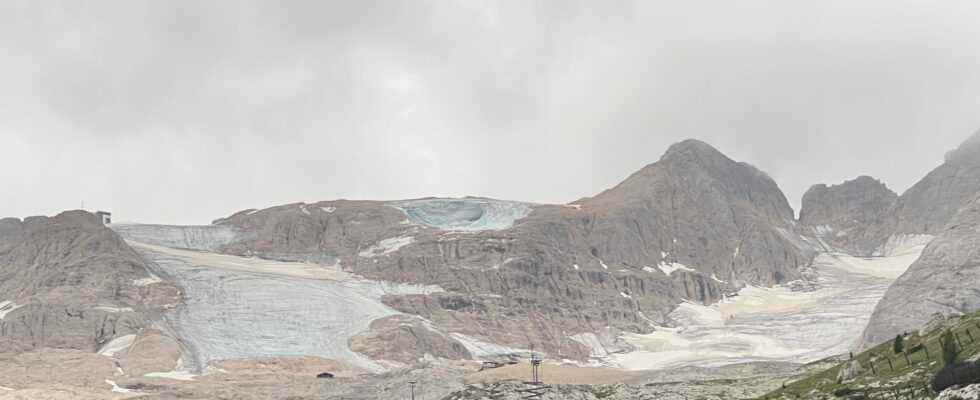At least seven people died in the devastating avalanche on the flank of Mount Marmolada in the Dolomites, when part of a glacier broke off and fell down the valley on July 3, 2022. Eight other people were injured. Up to a dozen other victims are believed to be under the rubble of the avalanche cone. So far there is no official information about the exact cause, but there is some evidence that water caused the glacier in Italy to break. However, the accident has a long history that makes such potentially catastrophic events more common in the future.
Glaciers like those on the Marmolada are not uniform blocks of ice. They consist of differently structured layers and are traversed by fissures. Most importantly, they often contain water that seeps through the glacier, flows through the crevasses and can even collect in lakes beneath the ice. Perhaps such a lake beneath the ice, a pocket of water, ruptured the glacier, the meteorologist Daniel Schrott suspects on Twitter.
Incredible footage from a helicopter of the mountain rescue of the basal detachment in Marmolada.
Water lubrication at the base (or interstrata) and increased pressure in water-filled crevasses are probably the main causes for this catastrophic event pic.twitter.com/2OXRExkdjy
— Alpine-Adriatic Meteorological Society (@aametsoc) July 3, 2022
The fact that accumulated meltwater can trigger catastrophes on glaciers is nothing new. Around 200 people died on Mont Blanc when around 200,000 cubic meters of water erupted from the Tête Rousse glacier in 1892. In 2010, experts pumped out another such pocket in the glacier in an unprecedented effort to prevent another event of this type. However, the catastrophe on the Marmolada was not a flood but an avalanche.
A warm year of many
Therefore, it may have been the pressure of the water that caused the Marmolada glacier to burst, writes the Società Meteorologica Alpino-Adriatica. The shape of the terrain under the glacier probably also contributed to this. The ice break-off occurred near a point where the mountainside changes from a relatively flat part, known as the cirque, to a steeper slope. The glacier does not go all the way down the slope, but forms a hanging glacier that forms ice cliffs and towers, called séracs, over the slope. Such areas become unstable particularly easily at high temperatures.
